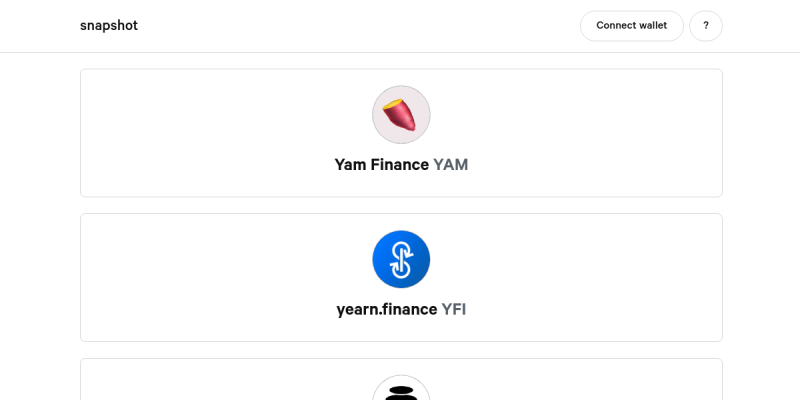The world of cryptocurrency is filled with jargon and technical terms that can often be confusing for newcomers. Among these terms, “snapshot” plays a vital role, serving as an essential process in the realm of blockchain technology. In this article, we will delve into what snapshots are, their importance, how they work, and their implications for cryptocurrency investors and users.

what is snapshot in crypto
What is a Snapshot in Crypto?
At its core, a snapshot in crypto refers to a record of the state of a blockchain at a specific point in time. This includes all account balances, transaction histories, and any other necessary data concerning the assets on the blockchain. Snapshots can be used for various purposes, including airdrops, forks, and promotional campaigns.

what is snapshot in crypto
Definition and Purpose
- Definition: A snapshot captures the current state of a blockchain, essentially providing a “photograph” of the network at a specific moment. This is crucial for determining which users hold which tokens or coins, guiding various subsequent actions in the crypto ecosystem.
- Purpose: The primary purpose of snapshots is to facilitate changes that require an accurate reflection of accounts at a given time. For example, if a new coin is being launched through an airdrop, a snapshot may be taken to decide which existing holders qualify to receive the new assets.
How Snapshots Work
- Timing: A snapshot can be scheduled by the developers of a blockchain and is publicized ahead of its occurrence. This gives users the chance to meet any eligibility requirements, such as holding a specific amount of tokens by the time of the snapshot.
- Implementation: Technical implementation can vary between blockchains. In general, however, the snapshot will record each wallet address and the balance of tokens at the defined block height. This data is then stored and used for whatever purpose has been set out by the blockchain’s governance or development team.
- Verification: After the snapshot, the results are usually announced to the public, ensuring transparency. Users can verify their snapshot data using blockchain exploration tools which display historical data.
Why Are Snapshots Important?
Snapshots hold significant importance in the crypto landscape for various reasons, particularly for investors and developers.
Airdrops and Forks
- Airdrops: Many projects incentivize community engagement by distributing free tokens to existing holders based on a snapshot taken at a previous date. This not only rewards loyal users but also helps projects to grow their user base.
- Forks: Snapshots are critical in the event of a blockchain fork, where a new version of the blockchain splits off from the original. The snapshot helps determine who is entitled to the new tokens that arise from the fork, ensuring that users who held the original coin also receive the new asset.
Investor Confidence and Fairness
- Building Trust: By clearly defining the criteria based on snapshots, projects can instill a sense of security in the community. When users know they can receive new tokens based on a snapshot, it encourages them to hold onto their investments.
- Promoting Fairness: Snapshots help ensure that all eligible participants can fairly claim new tokens, avoiding chaos in distribution. This proactivity can alleviate concerns about wealth concentration within early adopters or whales who may otherwise monopolize new token distributions.
Risks and Considerations
While snapshots can offer great benefits, they are not without risks. Users should be aware of several factors that could potentially lead to confusion or financial loss.
Technical Failures
- Human Error: If a snapshot is not properly executed, there can be significant issues in determining who is eligible for new tokens. This could lead to wrongful exclusions or double-counting, which can undermine trust in the process.
- Network Issues: Snapshots are sometimes susceptible to technical issues or network problems, especially during periods of high volatility. For example, if a snapshot occurs during a congested scenario, it may lead to incomplete or inaccurate records.
Market Manipulation
- Speculator Behavior: The anticipation of an airdrop or fork can often lead to speculative trading, which can inflate the price of the original token leading up to the snapshot. After the event, a market correction often follows, which can result in significant losses for those who invested too heavily based on these tactics.
- Timing Risks: Holding tokens until a snapshot carries its own risks, such as price volatility or loss due to unforeseen circumstances. Investors must weigh the pros and cons of timing in their investment strategies.
Common Use Cases for Snapshots
Snapshots don’t just serve one purpose; they can be applied in various scenarios within the blockchain ecosystem.
Governance Votes
- Decentralized Governance: Many decentralized finance (DeFi) projects rely on snapshots for governance voting. Token holders are often required to stake their tokens to participate in proposals or votes, and the snapshot provides a basis for determining which users have a say.
- Proposal Outcomes: The results of governance proposals are often determined based on the token allocations captured during a snapshot, aligning project direction with community interests.
Staking Rewards
- Quid Pro Quo: Some staking protocols take snapshots to allocate rewards accurately to those who have engaged in staking over certain time frames. This incentivizes users to commit their tokens for longer periods, ensuring network security and stability.
- Equitable Distribution: Snapshots allow for equitable distribution among participants, ensuring that those who actively participate in the network receive appropriate rewards.
Best Practices for Managing Snapshots
If you’re an investor or a crypto user, understanding how to manage your assets around snapshots can significantly boost your strategy.
Stay Informed
- Follow Projects: Regularly check updates from projects you are invested in to remain informed about upcoming snapshots. Many projects will provide announcements through their official channels, such as social media or newsletters.
- Join Communities: Engage in community forums or groups to share insights and obtain timely information from other users about significant snapshot events.
Risk Management
- Diversify Investments: To mitigate potential losses due to snapshot-related events, consider diversifying your portfolio. This strategy can help cushion blows associated with high volatility or unsuccessful airdrops.
- Set Price Alerts: Use price alert tools to monitor changes in the cryptocurrency market leading up to a snapshot. This can help you make informed decisions about buying or selling based on market behavior.
FAQs
1. What is the key benefit of a snapshot in crypto?
Snapshots allow users to fairly qualify for new tokens through airdrops or forks based on their holdings at a specific block height, ensuring that both longtime supporters and new users have a chance to gain from community-driven initiatives.
2. How often do crypto projects take snapshots?
The frequency of snapshots varies by project, with some conducting them regularly for governance or rewards, while others may do so only during significant events like new token launches or forks.
3. What happens if I sell my tokens before a snapshot?
If you sell your tokens before the snapshot, you will not be eligible to participate in any airdrop or receive any tokens associated with that snapshot, as only those who hold the asset at the time will qualify.
4. What is the difference between a hot snapshot and a cold snapshot?
A hot snapshot refers to taking a snapshot of a blockchain while it is actively processing transactions. In contrast, a cold snapshot is taken when the network is less congested, aiming for a more accurate and streamlined record.
5. How can I verify a snapshot result?
Users can verify snapshot results using a blockchain explorer, which allows them to check historical data related to their wallet addresses and confirm eligibility based on the recorded balances at the time of the snapshot.
6. Are snapshots secure?
While snapshots offer certain security measures, there is always some risk involved due to potential technical failures or human error. It is vital for users to understand these risks and perform due diligence.
7. What should I do if I miss a snapshot?
If you miss a snapshot, unfortunately, you will not be eligible for any associated rewards. However, you can continue holding or trading your assets as usual, keeping an eye on future snapshots or developments within the project.
8. Can a snapshot be reversed?
No, once a snapshot is taken and recorded on the blockchain, it cannot be reversed. The data captured during that moment is immutable, which is a principle of blockchain technology.
Conclusion
Snapshots play a crucial role in the cryptocurrency space, providing a systematic approach to manage assets and facilitate historical accuracy. They serve as vital records for airdrops, forks, governance participation, and user reward distribution. Understanding how snapshots work and their implications can help both investors and everyday users make informed decisions in this fast-paced environment. Always stay vigilant about upcoming snapshots and engage actively with the community to navigate this exciting, yet often complex, world of cryptocurrency. Whether you are a seasoned investor or just starting, keeping snapshots in mind will serve you well in the long run.